A uniform metal disc of radius R is taken and out of it a disc of diameter R is cut-off from the end. The center of mass of the remaining part will be
R4 from the center
R3 from the center
R5 from the center
R6 from the center.
The correct Answer is:D
To find the center of mass of the remaining part of a uniform metal disc after cutting out a smaller disc, we can follow these steps:
1. Understand the Geometry:
- We have a larger disc of radius R.
- We cut out a smaller disc of diameter R, which means the radius of the smaller disc is R2.
2. Calculate the Areas:
- The area of the larger disc A1 is given by:
A1=πR2
- The area of the smaller disc A2 is:
A2=π(R2)2=πR24
3. Determine the Position of the Centers:
- The center of mass of the larger disc is at its center, which we can consider as the origin (0, 0).
- The center of the smaller disc, which is cut from the edge of the larger disc, is at the point (R,0).
4. Use the Center of Mass Formula:
- The center of mass xcm of the remaining part can be calculated using the formula:
xcm=A1x1−A2x2A1−A2
- Here, x1=0 (center of the larger disc), and x2=R (center of the smaller disc).
5. Substitute the Values:
- Substitute the areas and positions into the formula:
xcm=πR2⋅0−πR24⋅RπR2−πR24
- Simplifying this gives:
xcm=−πR34πR2−πR24=−R34R2(1−14)=−R343R24=−R3
6. Final Position of the Center of Mass:
- Since we are measuring from the center of the larger disc, the center of mass of the remaining part is at:
xcm=−R3
- This indicates that the center of mass is R3 to the left of the center of the larger disc.
- We have a larger disc of radius R.
- We cut out a smaller disc of diameter R, which means the radius of the smaller disc is R2.
- The area of the larger disc A1 is given by:
A1=πR2
- The area of the smaller disc A2 is:
A2=π(R2)2=πR24
- The center of mass of the larger disc is at its center, which we can consider as the origin (0, 0).
- The center of the smaller disc, which is cut from the edge of the larger disc, is at the point (R,0).
- The center of mass xcm of the remaining part can be calculated using the formula:
xcm=A1x1−A2x2A1−A2
- Here, x1=0 (center of the larger disc), and x2=R (center of the smaller disc).
- Substitute the areas and positions into the formula:
xcm=πR2⋅0−πR24⋅RπR2−πR24
- Simplifying this gives:
xcm=−πR34πR2−πR24=−R34R2(1−14)=−R343R24=−R3
- Since we are measuring from the center of the larger disc, the center of mass of the remaining part is at:
xcm=−R3
- This indicates that the center of mass is R3 to the left of the center of the larger disc.
Topper's Solved these Questions
- BOOK - DC PANDEYCHAPTER - CENTRE OF MASSEXERCISE - Taking it together73videos
CENTRE OF MASS
- BOOK - DC PANDEYCHAPTER - CENTRE OF MASSEXERCISE - Assertion and reason21videos
CENTRE OF MASS
- BOOK - DC PANDEYCHAPTER - CENTRE OF MASSEXERCISE - Medical entrances gallery27videos
CENTRE OF MASS
- BOOK - DC PANDEYCHAPTER - CALORIMETRY AND HEAT TRANSFEREXERCISE - Medical entrance s gallery38videos
CALORIMETRY AND HEAT TRANSFER
- BOOK - DC PANDEYCHAPTER - CENTRE OF MASS, IMPULSE AND MOMENTUMEXERCISE - Comprehension type questions15videos
CENTRE OF MASS, IMPULSE AND MOMENTUM
Similar Questions
A disc of radius a2 is cut out from a uniform disc of radius a as shown in figure . Find the X Coordinate of centre of mass of remaining portion
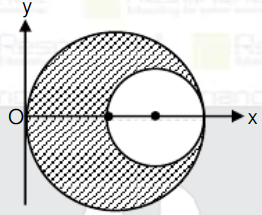 View Solution
View SolutionA thin homogeneous lamina is in the form of a circular disc of radius R. From it a circular hole exactly hall the radius of the lamina and touching the lamina's circumference is cut off. Find the centre of mass of the remaining part.
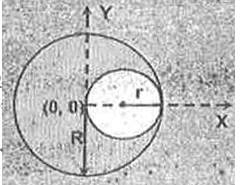 View Solution
View Solution
Knowledge Check
- Question 1 - Select One
A uniform metal disc of radius R is taken and out of it a disc of diameter R is cut-off from the end. The center of mass of the remaining part will be
AR4 from the centerBR3 from the centerCR5 from the centerDR6 from the center. - Question 2 - Select One
A uniform metal dise of radius R is taken and out of it a disc of diameter R is cut off from the end. The centre of the mass of the remaining part will be:
AR4from the centreBR3from the centreCR5 from the centreDR6 from the centre - Question 3 - Select One
A disc of radius r is cut from a larger disc of radius 4r in such a way that the edge of the hole touches the edge of the disc. The centre of mass of the residual disc will be a distance from centre of larger disc :-
Ar5Br4Cr2Dr3
From a circular disc of radius R, another disc of diameter R is removed. Locate c.m. of the remaining portion.
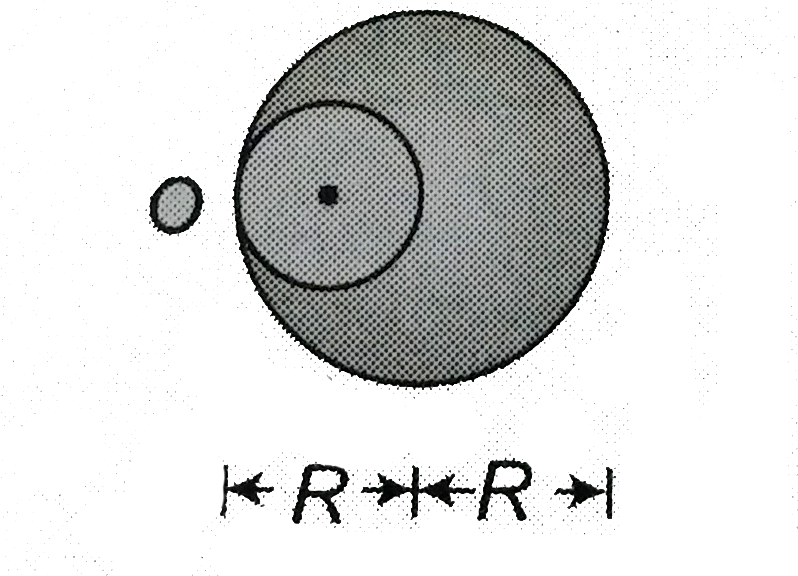 View Solution
View SolutionFrom a circular disc of radius R and mass 9M, a small disc of radius R/3 is removed from the disc. The moment of inertia of the remaining disc about an axis perpendicular to the plane of the disc and passing through O is
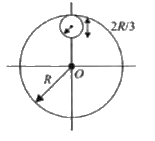 View Solution
View SolutionFrom a disc of radius R and mass m, a circular hole of diamter R, whose rim passes through the centre is cut. What is the moment of inertia of the remaining part of the disc about a perpendicular axis, passing through the centre?
View SolutionFrom the circular disc of radius 4R two small discs of radius R are cut off. The centre of mass of the new structure will be at
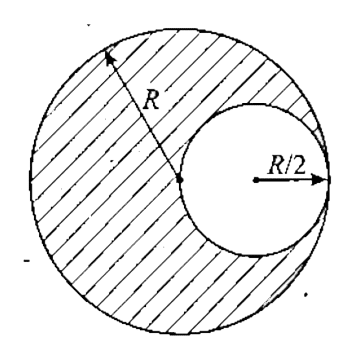 View Solution
View SolutionA circular hole is cut from a disc of radius 6 cm in such a way that the radius of the hole is 1 cm and the centre of 3 cm from the centre of the disc. The distance of the centre of mass of the remaining part from the centre of the original disc is
View Solution

